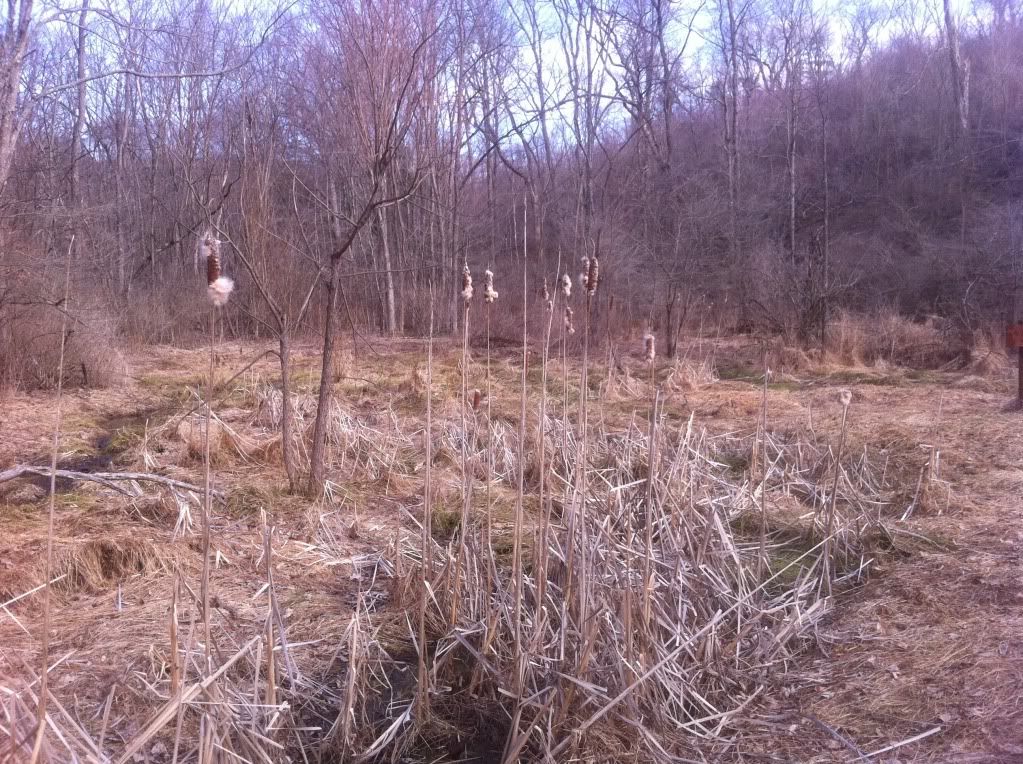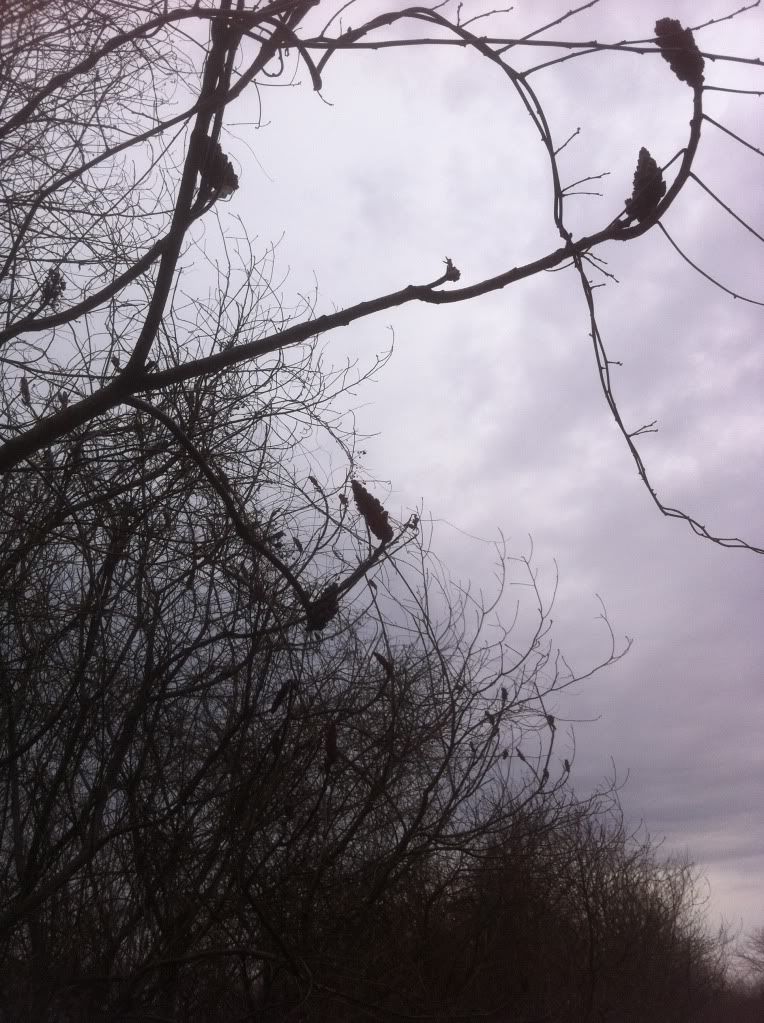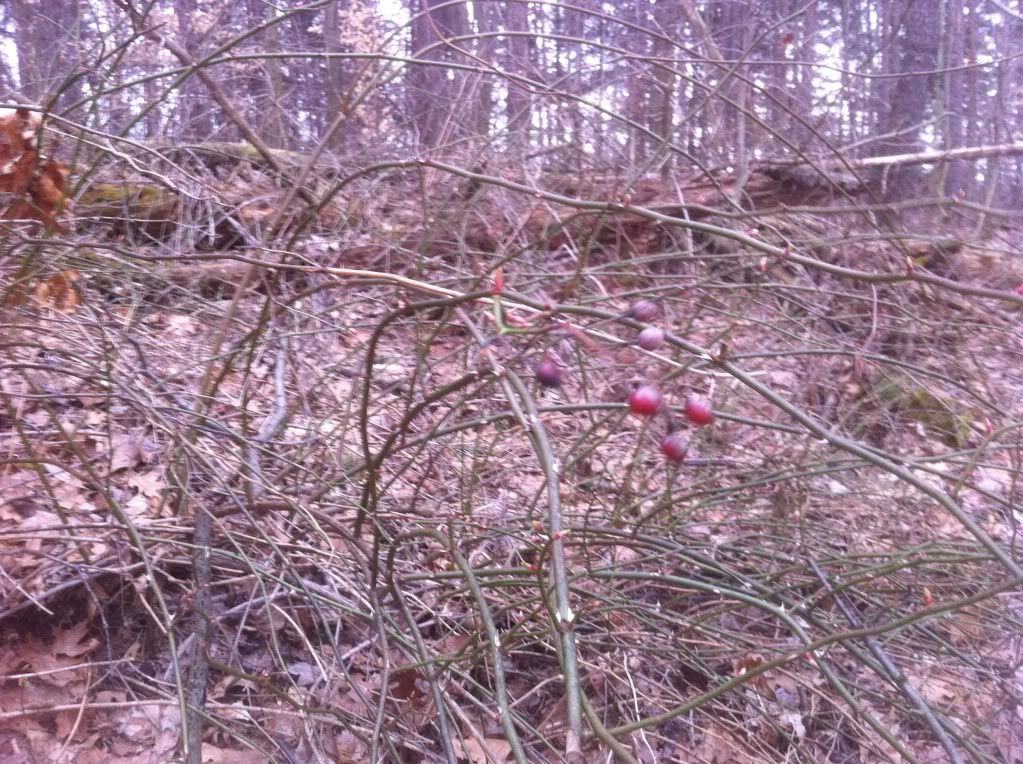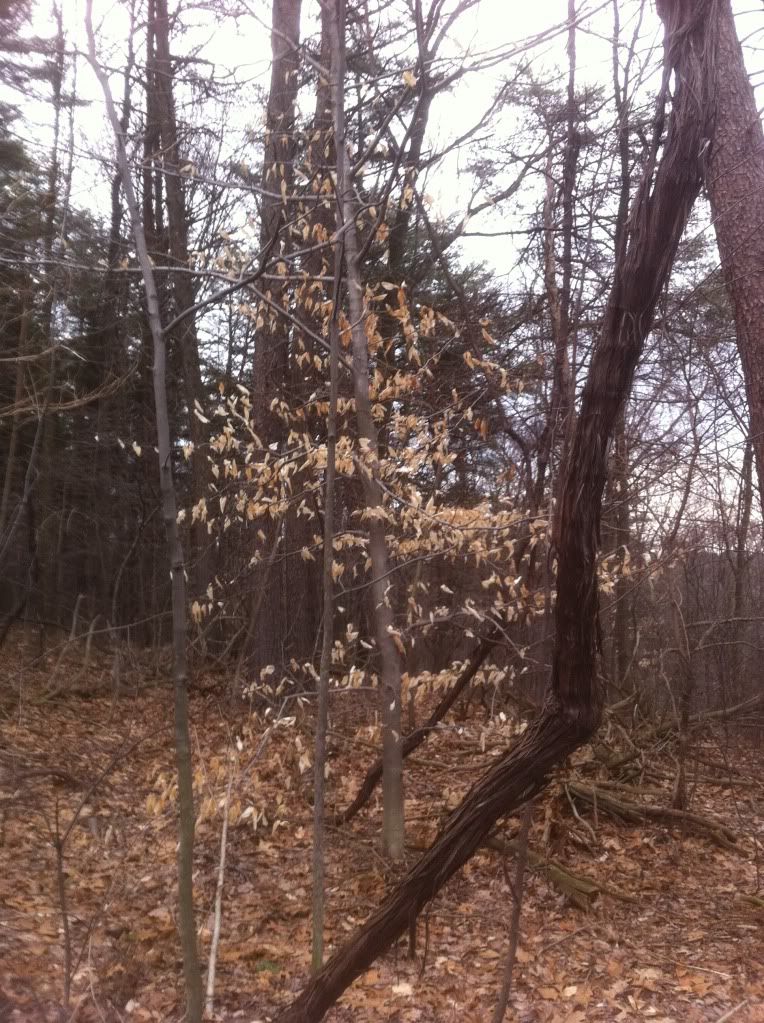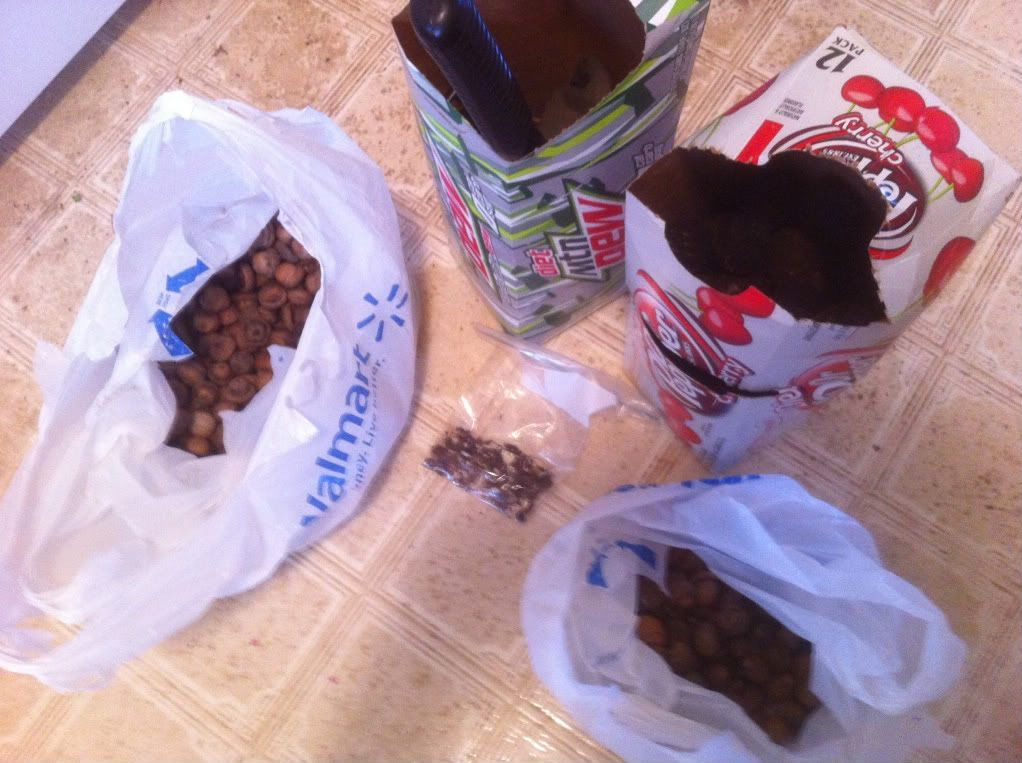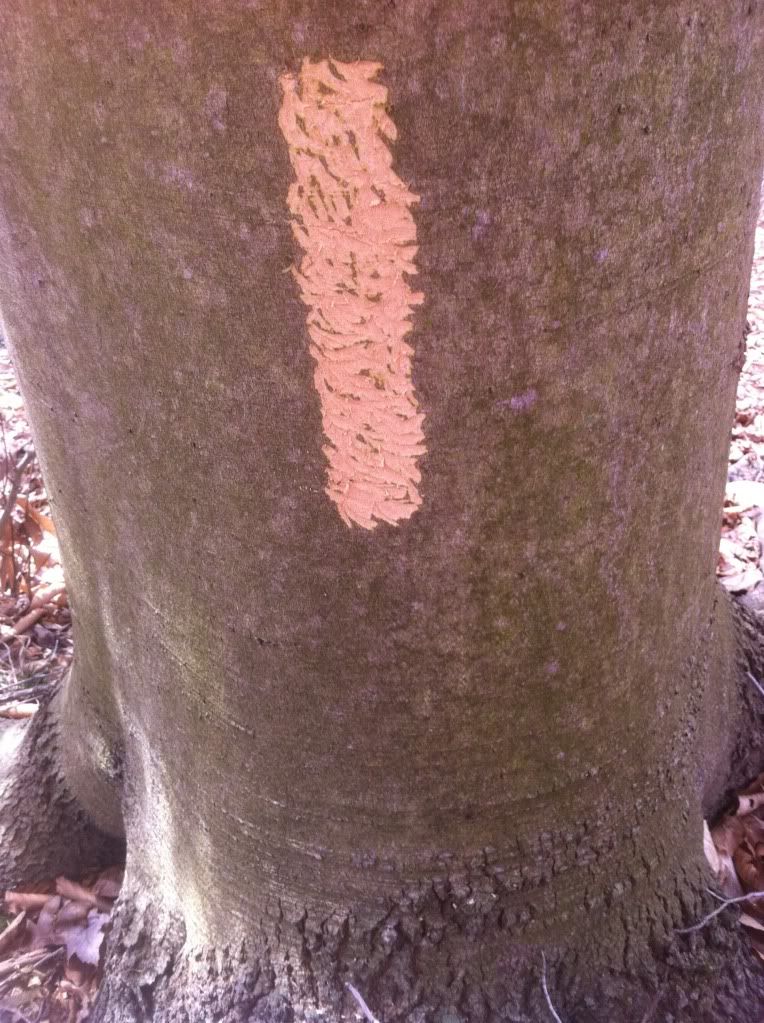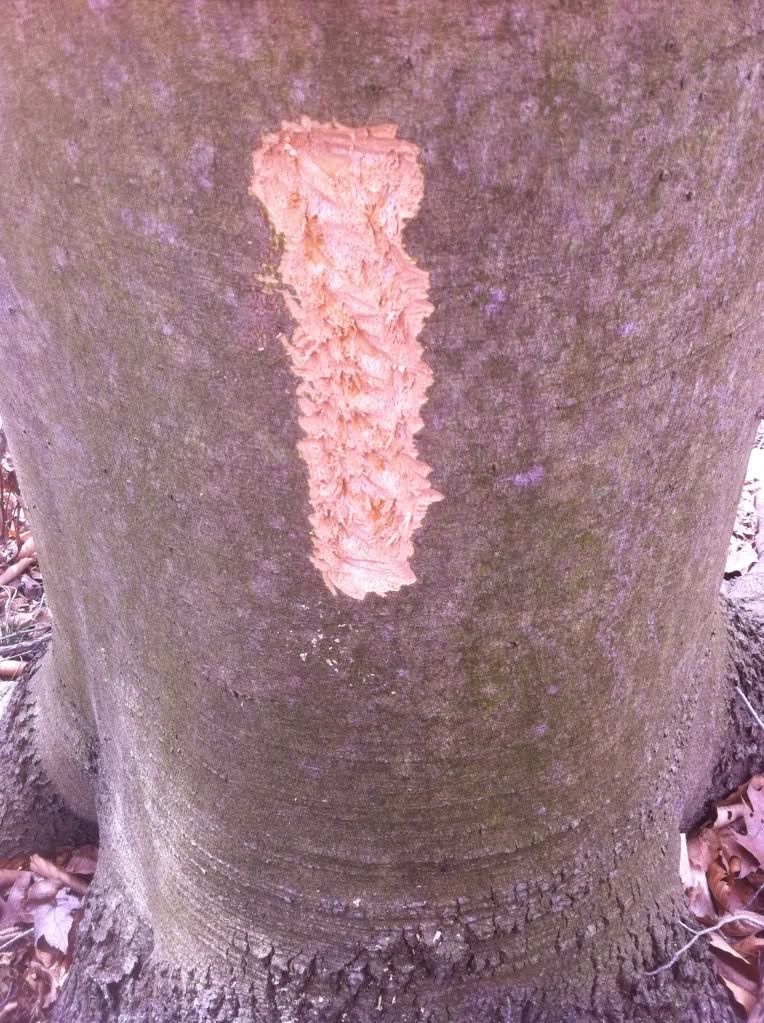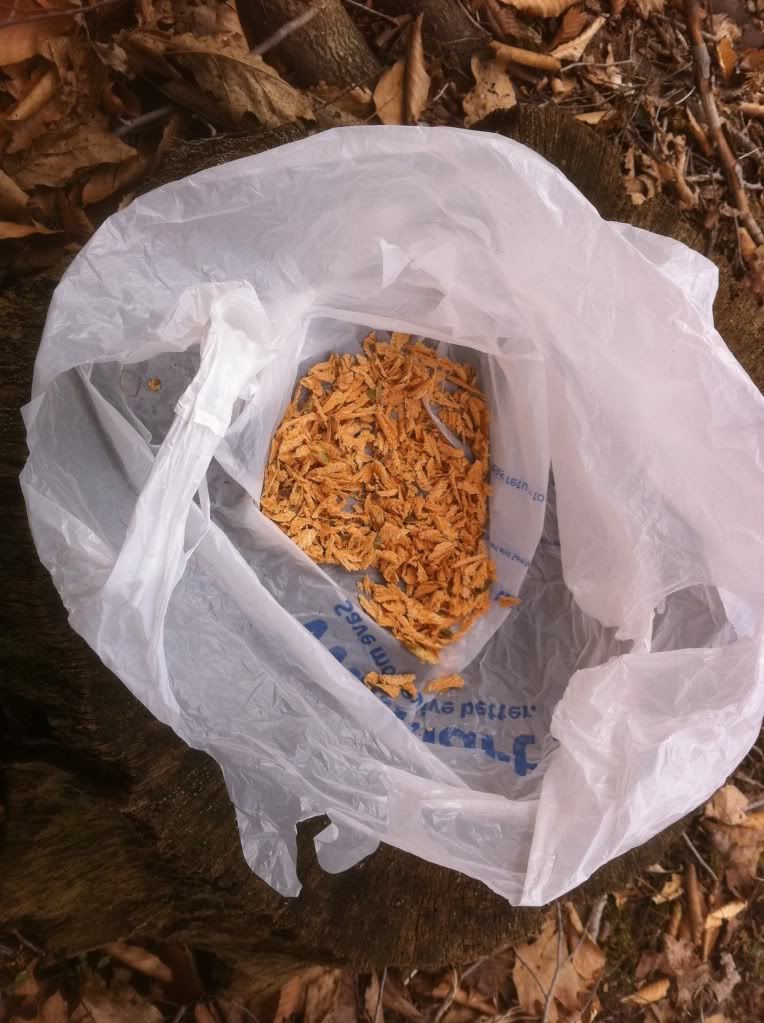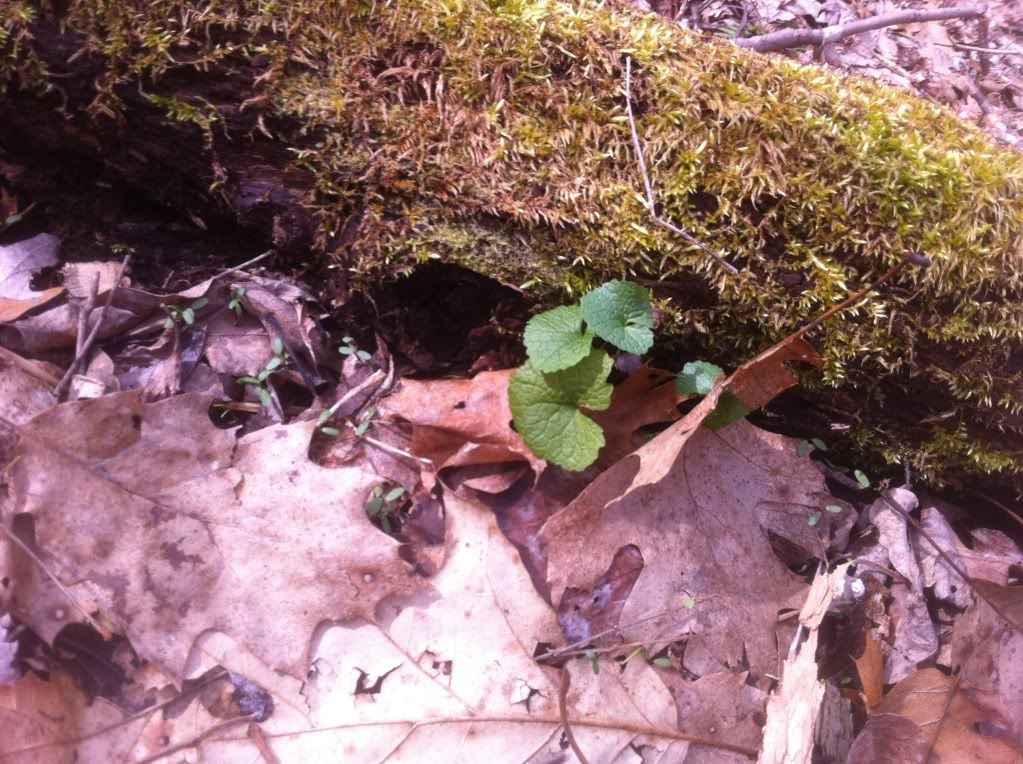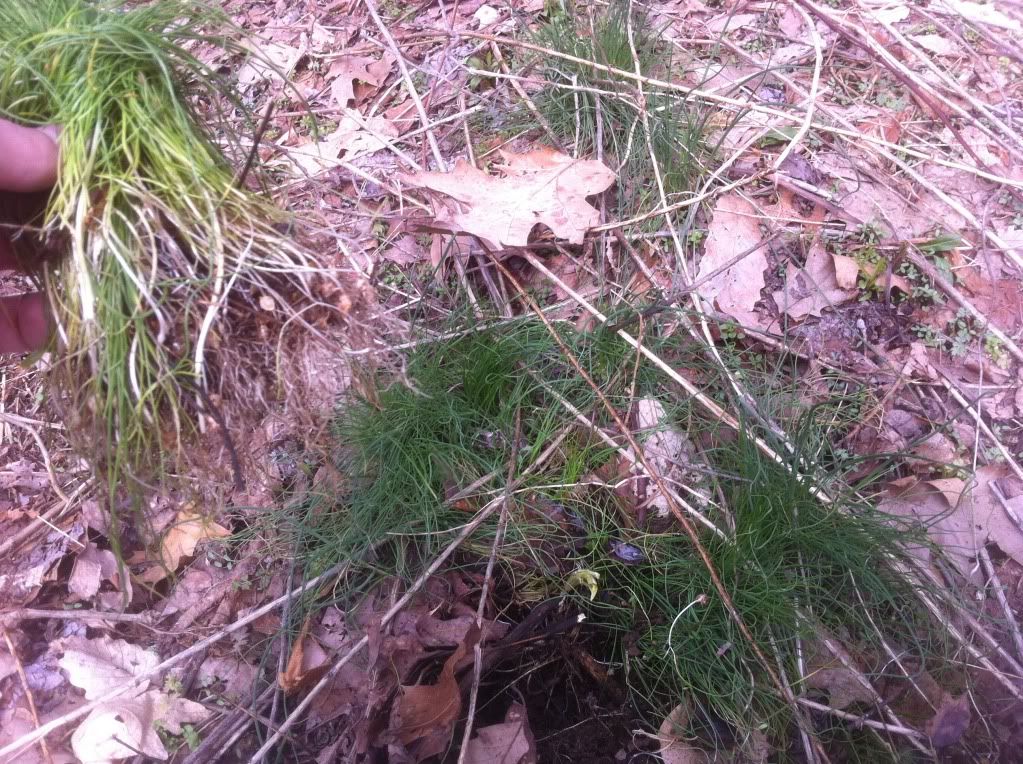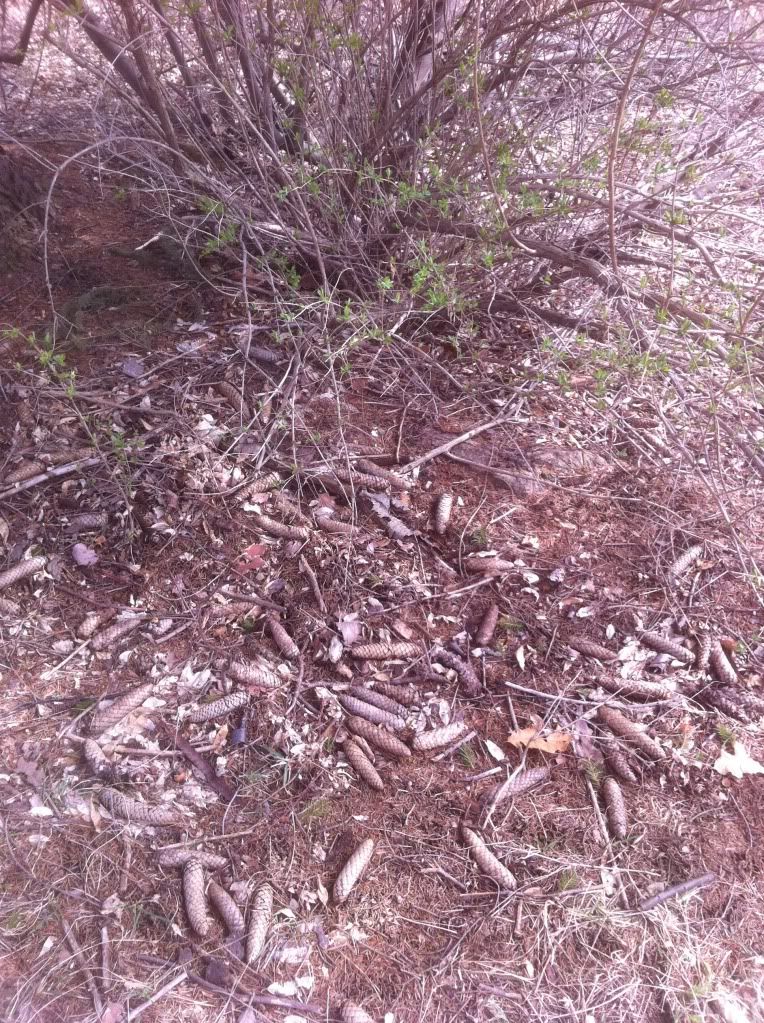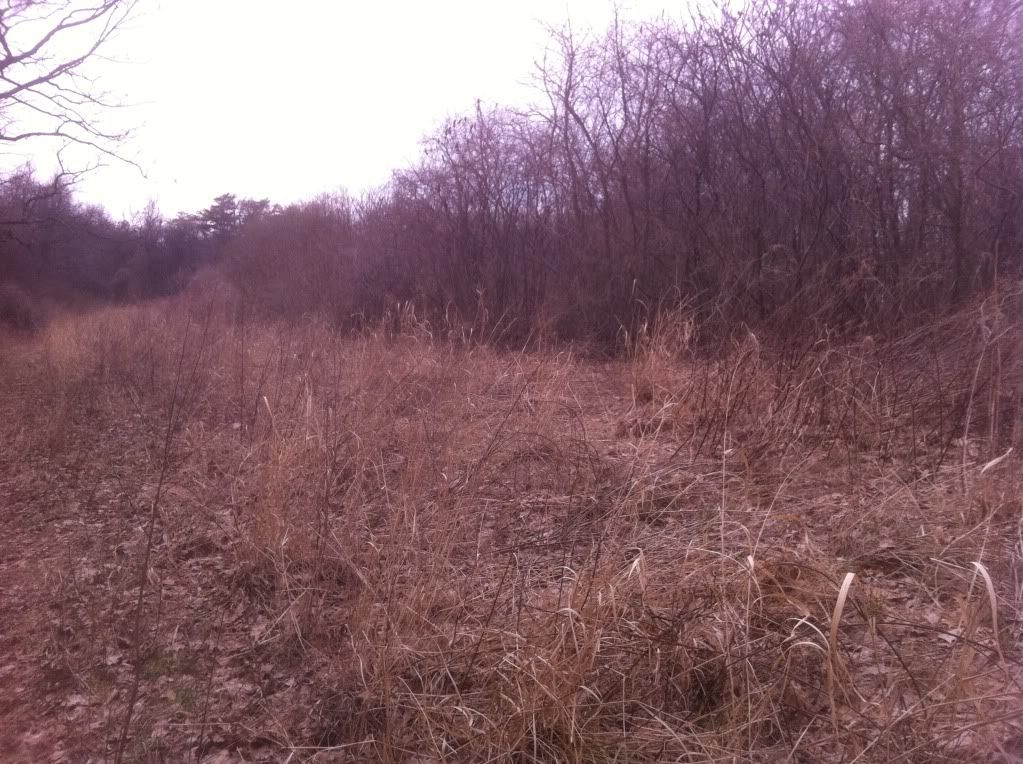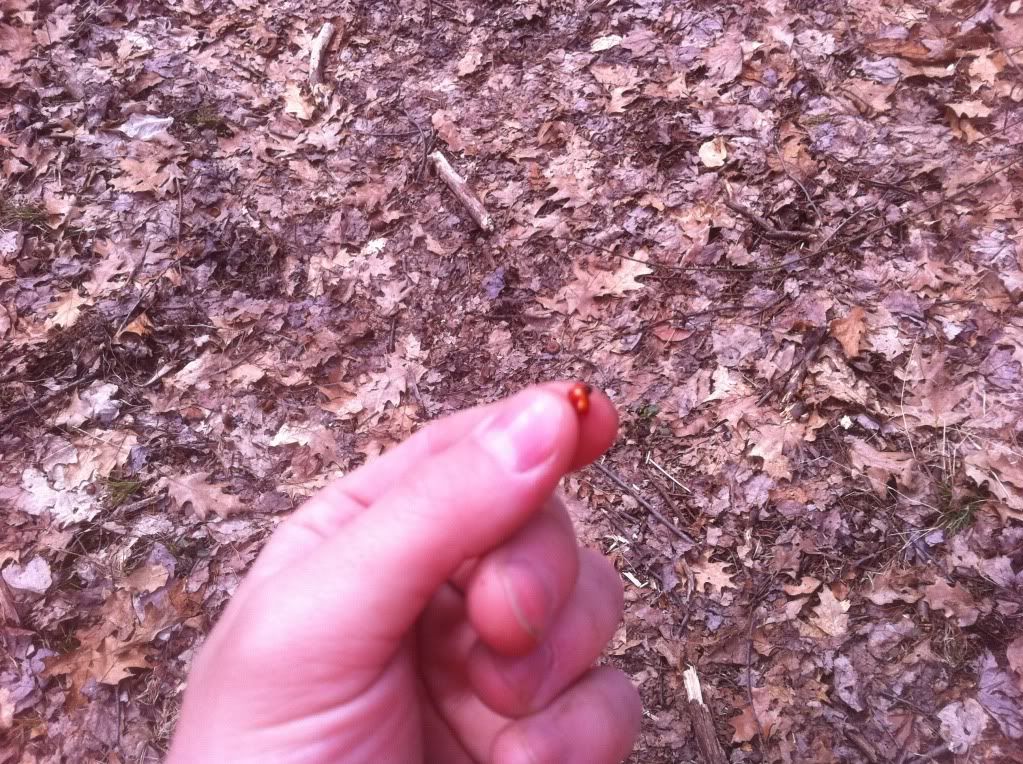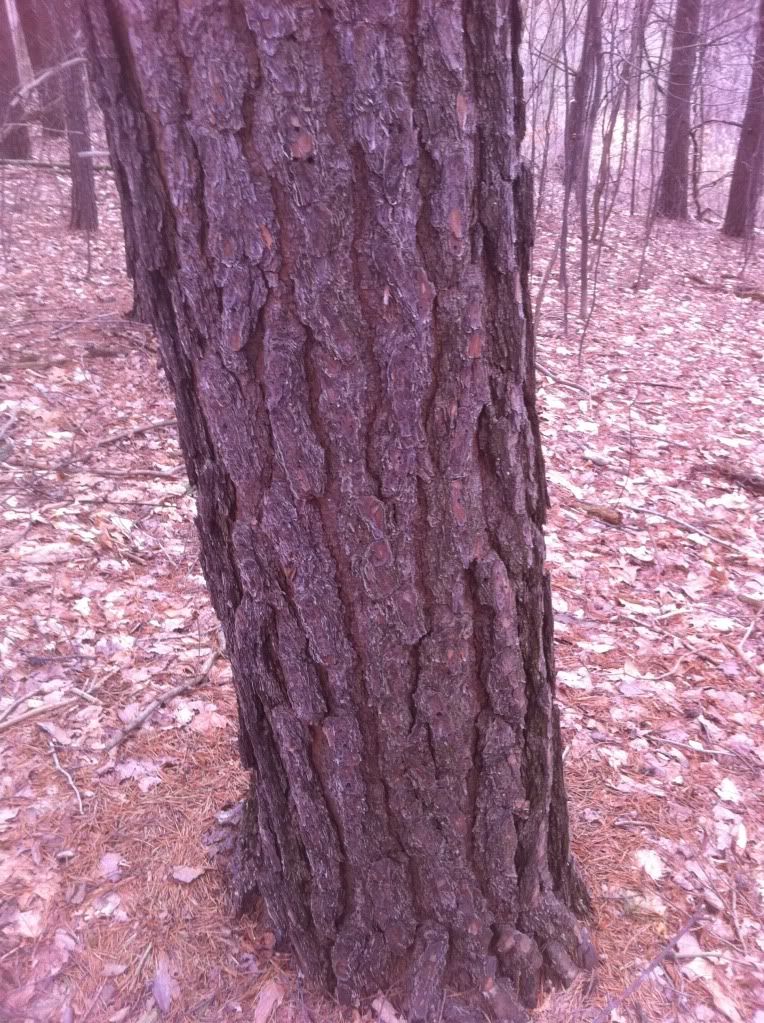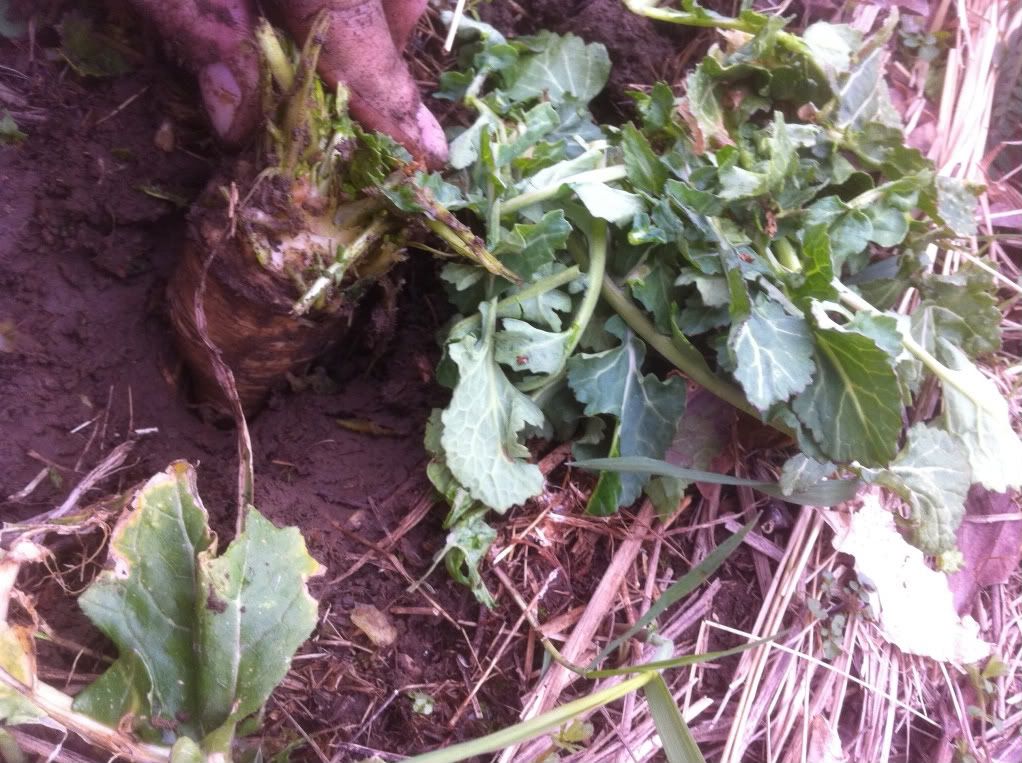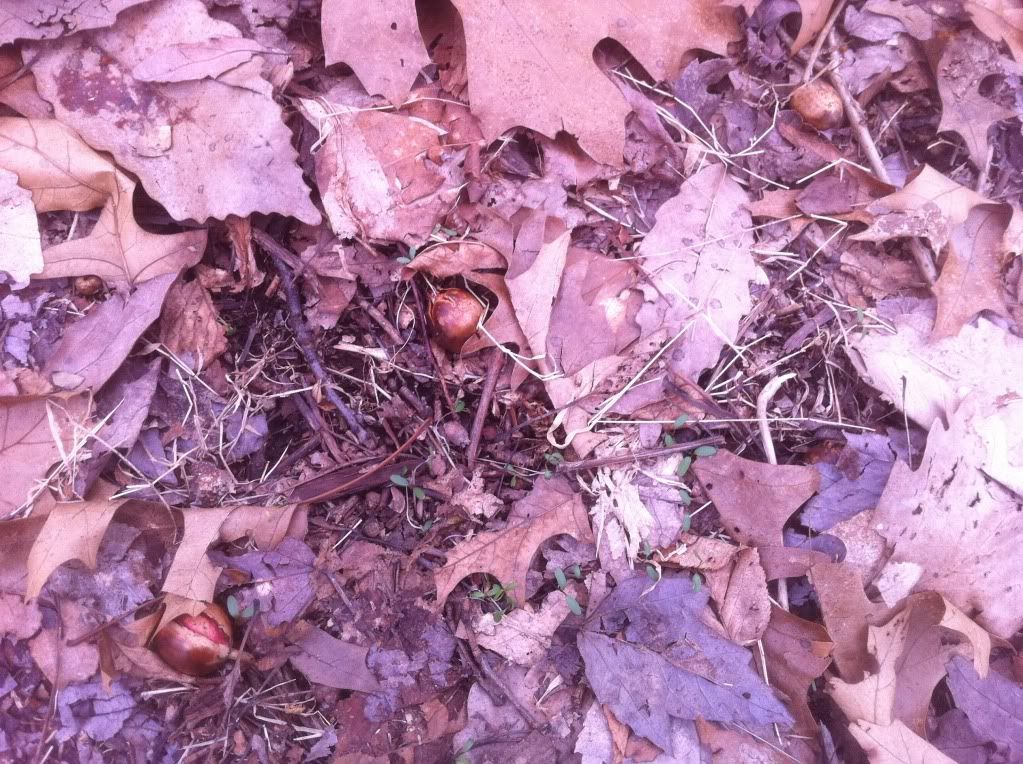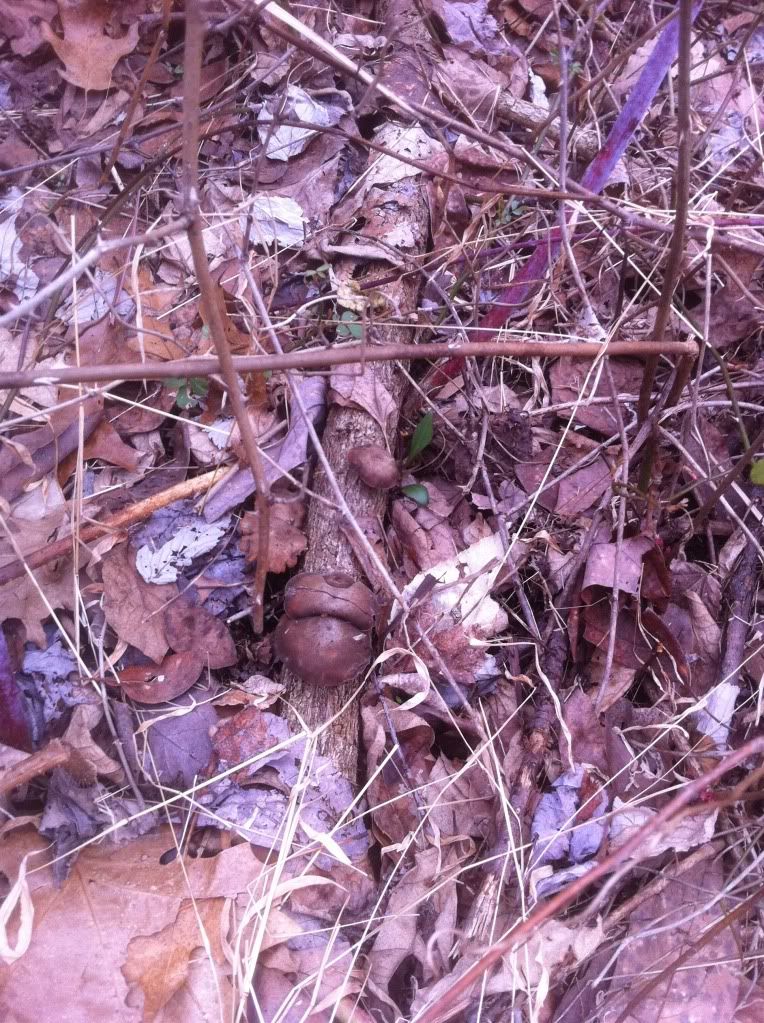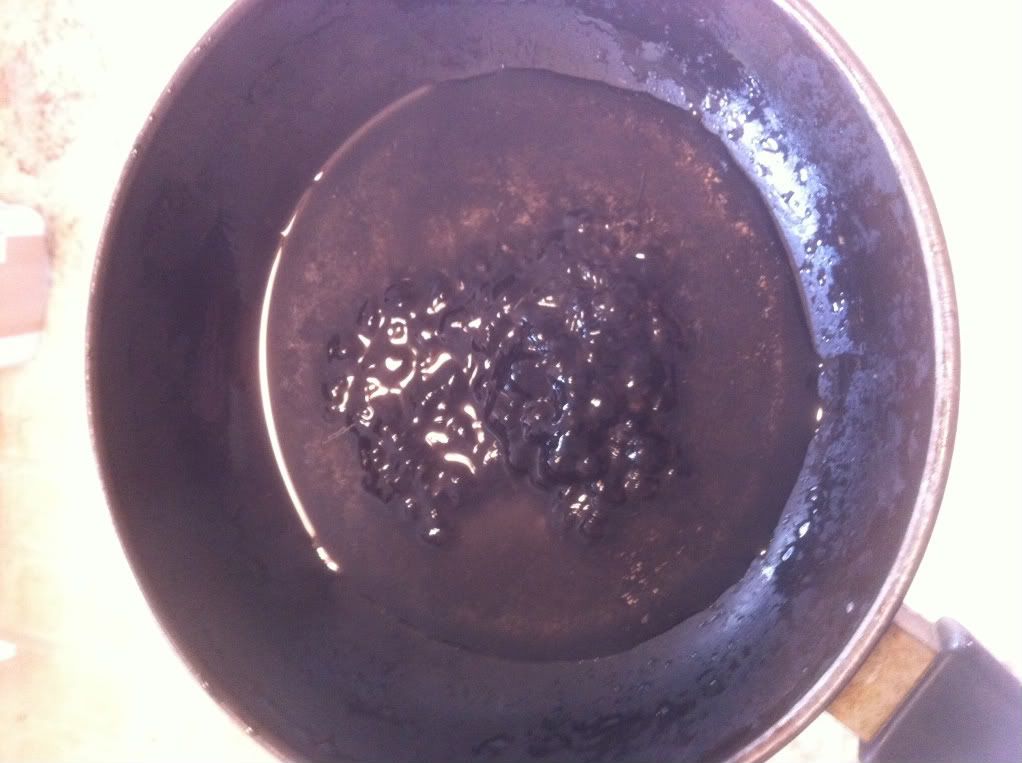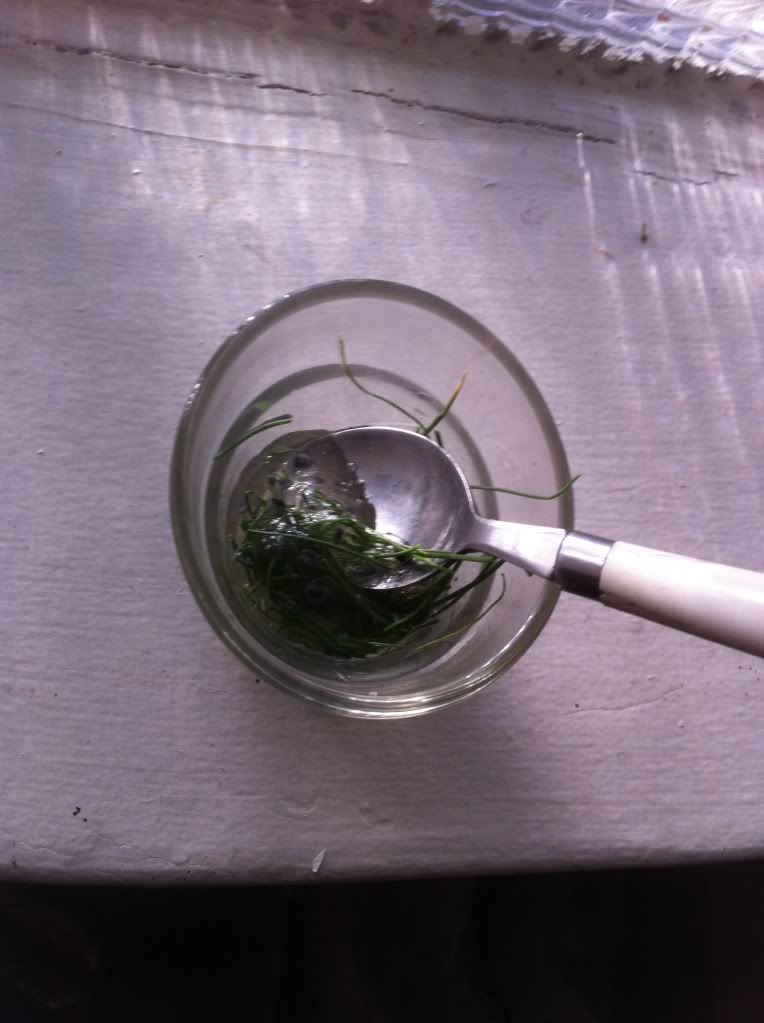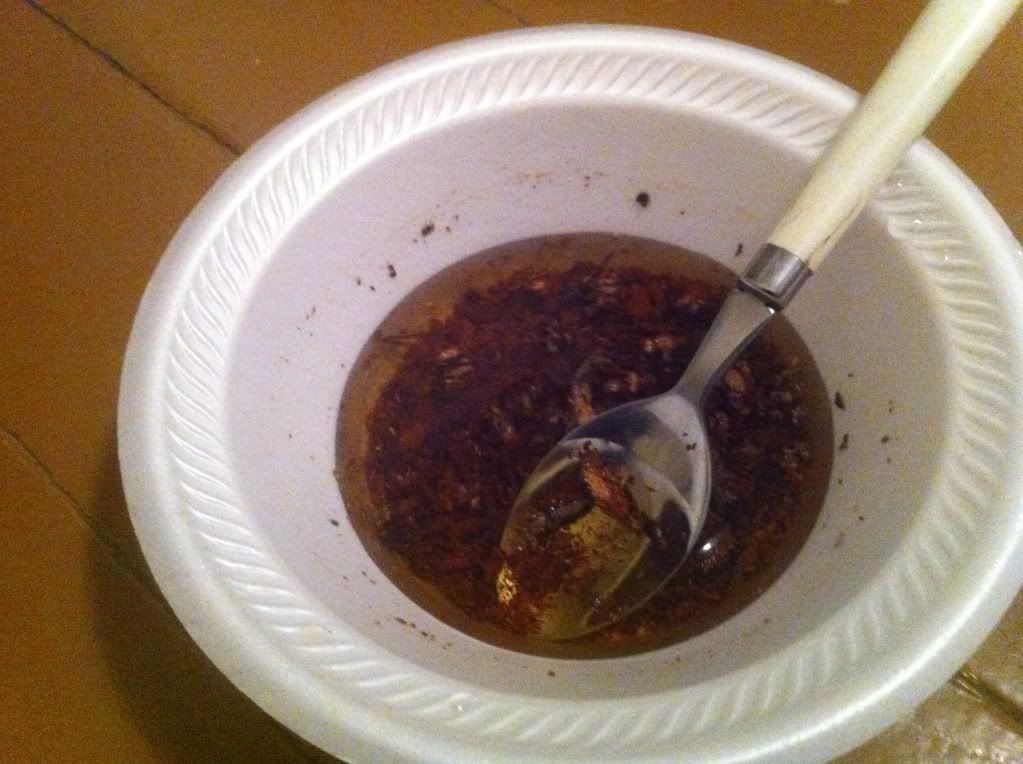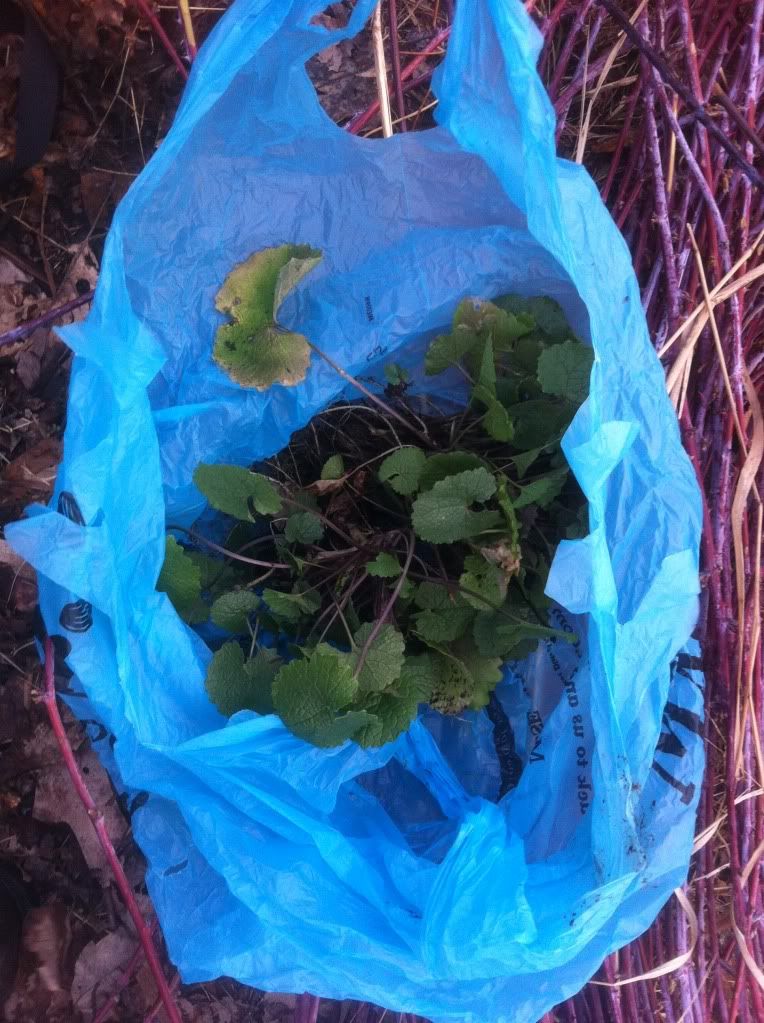Ok my adventure:
Friday I had free, so I planned to do it then. Thursday night my favorite MMO game had a war (hey, have to get my tribalism from somewhere) so I stayed up really late and ate more than usual, so I woke up Friday 11am and not too hungry, which throws off the experiment a little but not too badly.
After checking how my faction was doing (sorry! lol) I headed to the state gamelands I had checked out last week. Last week I didn’t see too many sparrows coming from the West, so I parked on the East and planned to head towards where I’d seen crows, in the middle of the gamelands.
Putting on my hunting orange, slinging my shotgun, and leaving the car, right away I saw a sparrow, but too close to the road to shoot. I did see very quickly these multiflora rose hips, and picked a bunch to put in my pocket.
Going this new route turned out a mistake, as I got lost and began trudging through the underbrush to find last week’s nice mowed path, burning unnecessary calories. Luckily, I did stumble on this decent size Beech tree, off the path, and sat under it to take some inner bark.
I don’t know anything about harvesting inner bark, except don’t “ring†a tree, so I started using a sharp knife removing the outer bark from a section similar in size to two playing cards.
I then used my knife to dig out inner bark. Beech doesn’t go too deep before hitting wood, and I recalled also to stick with outer half of inner bark for best texture, but still took a good bit from its inner half. I got a blister from digging with the knife, so obviously a better method exists.
It came out to this much. Not too huge but decent and more than I’ve taken before. About 20 minutes of work, I figured.
I saw a lot of these. They look to me like violet leaves (edible) but I didn’t know for sure, so left them.
At a clearing, I finally got a shot off at a sparrow but probably missed. I say probably because I sometimes have had to look very carefully to find their brown bodies in fallen leaves, and since I didn’t see a lot of feathers flying, I didn’t look super carefully. But I did find tons of green onions. I ate a whole lot there, as hiking around I started to feel a bit hungry.
Almost to the Virginia Pines and crows, I found this spruce tree and took a lot of needles for spruce tea.
Also saw a lot of unopened cones, so took a bunch in case I could get at their seeds.
This field had 20-30 robins bravely eating and making noise. Unfortunately Pennsylvania only allows hunting sparrows and crows at this time, and robins never, so I had to just aim and tell them how lucky they were.
I kept eating multiflora rose hips and taking more as I found them, though didn’t focus on them. Don’t know of any great method to eat them. They kind of resemble tiny apples, with yellow same size seeds, just very little flesh. Here, I took a nibble, then will take three more nibbles then throw it out. They taste great – like strawberry fruit rollups.
Got to crow’s Virginia Pine grove, but no crows this time. I had a feeling not to take inner bark from them, and argued with myself if intuition talked, or laziness, but decided to go with not harvesting any and started heading back.
Back near the spruce tree, I saw these brassica looking leaves and thought perhaps wild turnip. I love turnips, and dug it up but just couldn’t know for sure, so had to leave it. It smelled a little like mild horseradish. Thinking now, I probably should have taken it and ID’d it back home.
Found these white oak acorns. I’d still eat them (I like acorns) but didn’t bother collecting any.
Of course mushrooms everywhere (brown ones on that piece of wood) but I don’t know mushrooms, and heard their nutritional value doesn’t justify their risk.
Got back to my car without seeing any more birds other than protected robins, chickadees and turkey vultures. Drove over to near where I’d seen cattails and frogs before. Roadside saw this, which I couldn’t remember if comfrey or muellin but took some. Later decided muellin and didn’t eat.
PA, only allows 1 frog per day, and only from a selection of 4 species (not a hunter-gatherer friendly zone), and some frogs I saw didn’t look like any of PA’s “ok†species, but they do allow 15 amphibian eggs per day. I did a bunch of research but couldn’t determine if humans can eat frog eggs (I determined I probably had chorus frogs), but it looked likely, so I took, oh, “roughly†15. I had to mail something that day, so then left, so I could make it to a Post Office. Didn’t have time to harvest any cattail roots for my first time (civ calls, right).
I then went fishing at a spot near my house for an hour before dark, but no luck there – only other fisherman there said fish hadn’t bit anything that day.
End of first 1/2.


